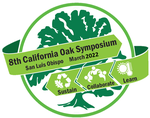California’s Working Oak Woodlands in a Changing Environment: Keeping Carbon in the Bank

Lynn Huntsinger, Professor of Rangeland Ecology and Management, Russell L. Rustici Chair in Rangeland Management, UC Berkeley
California’s oak woodland and grassland rangelands are a massive storehouse for carbon. How can we keep them that way? Site characteristics and the overwhelming role of weather and climate should be considered in efforts to protect carbon stores and enhance sequestration. The carbon lost in the 2020 wildfires was equivalent to 25% of all the carbon emissions in California, yet this is not generally part of the state’s reported emissions. If it was, California’s success in reducing emissions would instead be a failure. Ecosystem management must take on the wildfire problem, in addition to protecting carbon stores and sequestration processes. In fact, understanding the many ecosystem services provided by working rangelands, and the need to continue multipurpose management rather than succumbing to the temptation of focusing on a single management purpose, supports the resilience of these complex systems. One-size fits all practices and investments, and over-generalized application of research results, are inappropriate given California’s heterogenous ecosystems and uncertain weather. Management goals and recommendation should be specific to ecological site, and ideally include budgetary analyses of use to landowners. Thinking forward about our ecosystems, rather than backward, is compelled by our changing climate, and requires us to decide what our future working landscapes should be and to manage for them.
